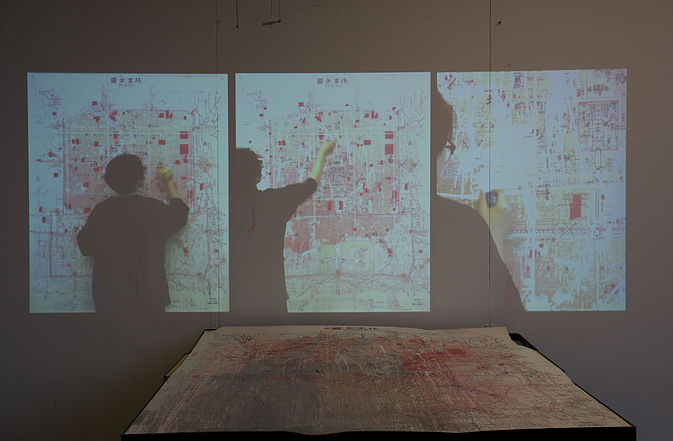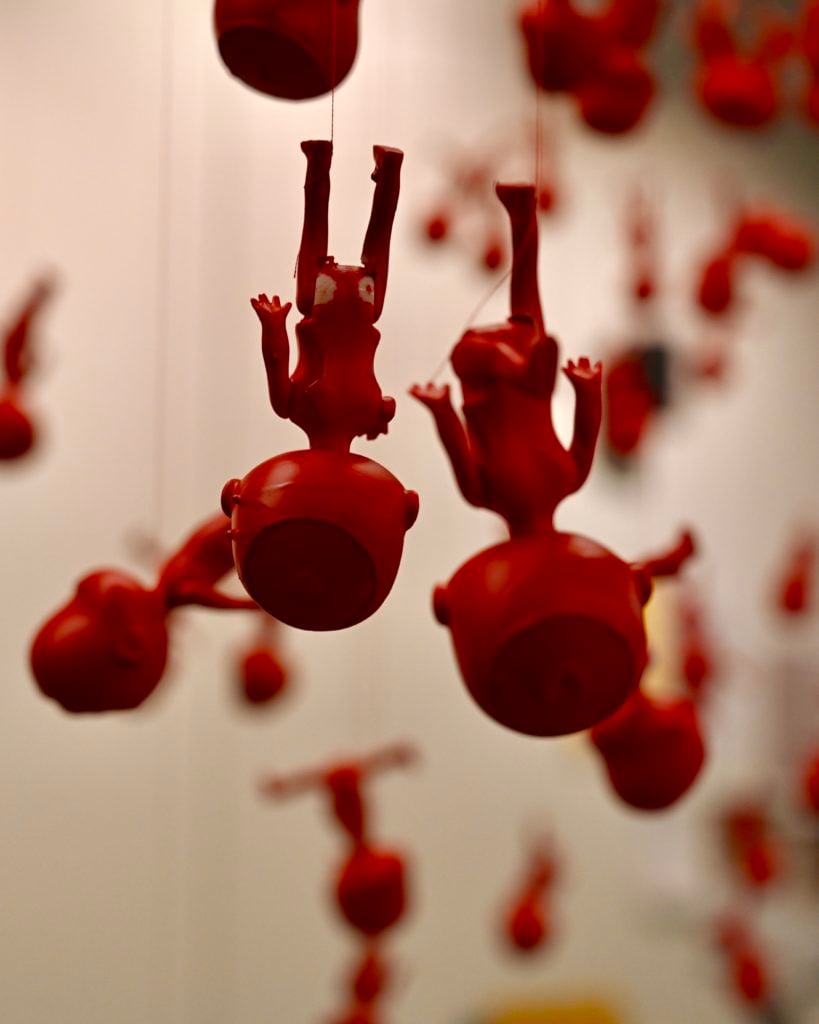Why 23-Year-Old Artist Ran Zhou Began Buying Thousands of Plastic Dolls Online to Make a Disquieting New Series


Artnet Gallery Network

Though it may be hard to imagine an artist needing a change in direction at just 23 years old, Chinese-born multimedia artist Ran Zhou says this was very much the case when she came to Brooklyn earlier this fall to take part the Carroll Gardens-based artist residency Residency Unlimited.
Until recently, the peripatetic young artist—who was born in China and recently graduated from the University of British Columbia—had been meticulously exploring urban development, migration flow, and education systems through a rigorous and complex mapping system. These works were shown last year in her exhibition “The Diary of Destroying a Map” at Vancouver’s Z Gallery Arts, her representing gallery.
Now, in what appears to be a 180-degree turn, Zhou is building installations with thousands of plastic dolls she’s purchased from wholesale factories in China.
We recently visited Zhou at her current Brooklyn studio to talk about her recent change in trajectory, why she’s using plastic dolls, and what we can expect to see in “Reclamation,” her upcoming group show at Brooklyn’s Compère Collective.

Ran Zhou, The Diary of Destroying a Map (2017). Courtesy of Z Gallery Arts.
For the past few years while at the University of British Columbia, your work has been dominated by your Map series, which are intensely researched deep dives into urban planning systems and the ways maps construct reality. Can you talk to me a bit about that series and why you’ve put these pursuits to the side for now?
I had been exploring heavily research-based topics regarding urban cartography, memory deconstruction, and dynamics of migration flow. But after dealing with these social topics for quite a while, part of me began to feel unsatisfied and restless. Research is an endless thing and I couldn’t let it go. The deeper I got into these subjects, the more obscure and complicated my feelings became. The more I read, the less I knew what to say.
I felt the need to rethink my own position. To what extent is an artist taking a vantage point from his or her culture? Is there a way to communicate with audiences without preaching? How can I balance my art between visual effect and theoretical basis? These are all the questions that have me keeping a distance from the Map series right now. Maps are always linked to different economic, social, and political issues.

Ran Zhou in her studio. Courtesy of Z Gallery Arts.
But the works you’re creating during your residency at RU are quite different—they’re made from these naked, honestly kind of disturbing plastic dolls. How did you get started with these?
Yes, the plastic dolls started early this year with the Red Dolls series I showed in an exhibition at the Audain Arts Center in Vancouver. Before I got started, I had been imagining working with small dolls in a relatively abstract form, that were not too life-like. I was searching on a Chinese website that’s like another version of Amazon—my friend directed me to a vendor that sells these classic dolls typically used as decorations for cakes, with the doll inside and the cake as the dress.
I reached out to the seller and said I don’t want these dolls with hair or clothes, and asked if I could order just the bodies. They kept asking me if I was sure. My initial idea was to paint the dolls red and place them in positions one by one. I put them together in the paint trays, which are like ships, and the red paint, that’s maybe blood. You can see each one with its different gestures, maybe trying to get up, and imagine the different stories. Another version called Free Fall has the dolls hanging from the ceiling and over time, they fall one by one to the floor. It was visually shocking.

Installation view of Free Fall, (2019). Courtesy of the artist.
But the dolls you’re working with now are a bit different. You’re not painting them red, and the bodies are different, too.
Yes, I contacted the seller again and asked if it would be possible to mix the baby head of the first doll with a more adult body, a woman’s body. I’ve been using these adult ones lately—I ordered about a thousand. With these, I’ve been making furniture. The legs of the adult dolls remind me of wicker furniture, the pieces of wood. For my upcoming show, I’m going to keep going with this idea and make a whole set of furniture.

The work of Ran Zhou. Courtesy of Z Gallery Arts.
Do you think there are any new influences coming into your work recently, especially now that you’re in New York?
Fashion has become a new research interest for my art practice, while it has a deep connection with my personal identity. I’m very inspired by Commes des Garçons. I’m thinking of art that is related to “fashion” in a harsh, informe [formless] way. For instance, I have a set of cotton mannequins I bought that got caught in the rain and are growing mold—it looks like diseased skin. I’d like to cover these with transparent plastic wrap. Fashion, as well as its distorted relationship with our body and identity, is worth being explored through a more diversified visual language pinned onto a socio-historical context. I’m interested in the ways we define our self-image, in a sense making our own bodies strange to ourselves, under different social circumstances.

Installation view of Free Fall, (2019). Courtesy of the artist.
Do you think these disparate artistic interests are related in any way?
These are all links to our proportionate relationships to the outside world from the internal self, whether it’s the body and clothing, or the environment through maps. While I always want to be seeking something perfect, I can feel the weakness in my own body and thoughts, and this imbalance leads me to explore these various areas of tension.
